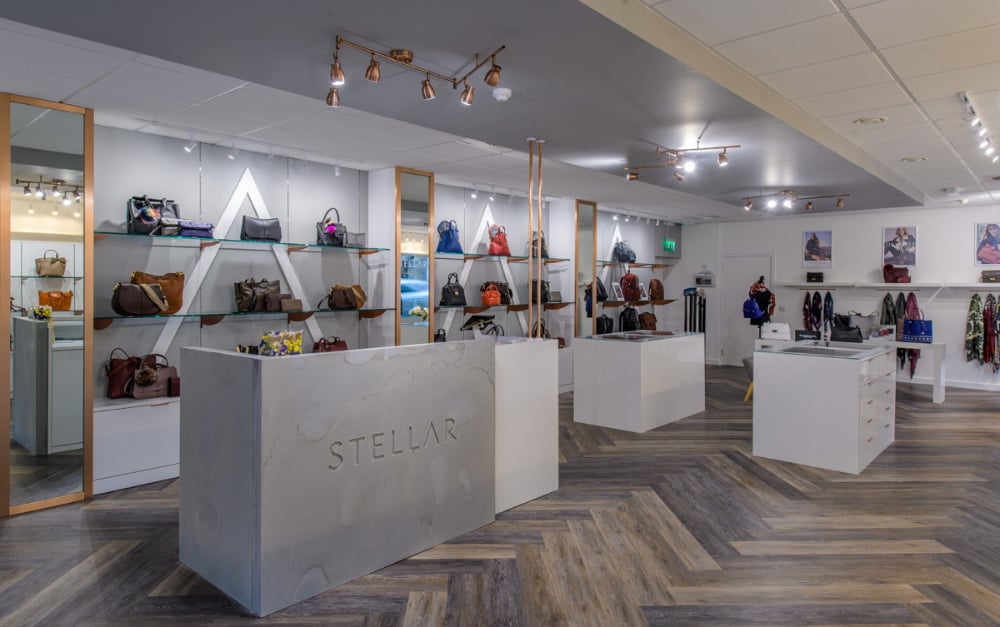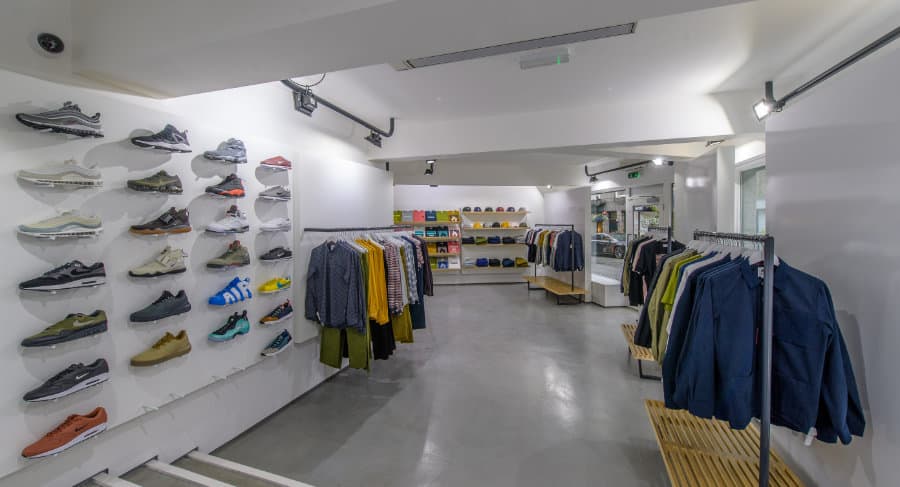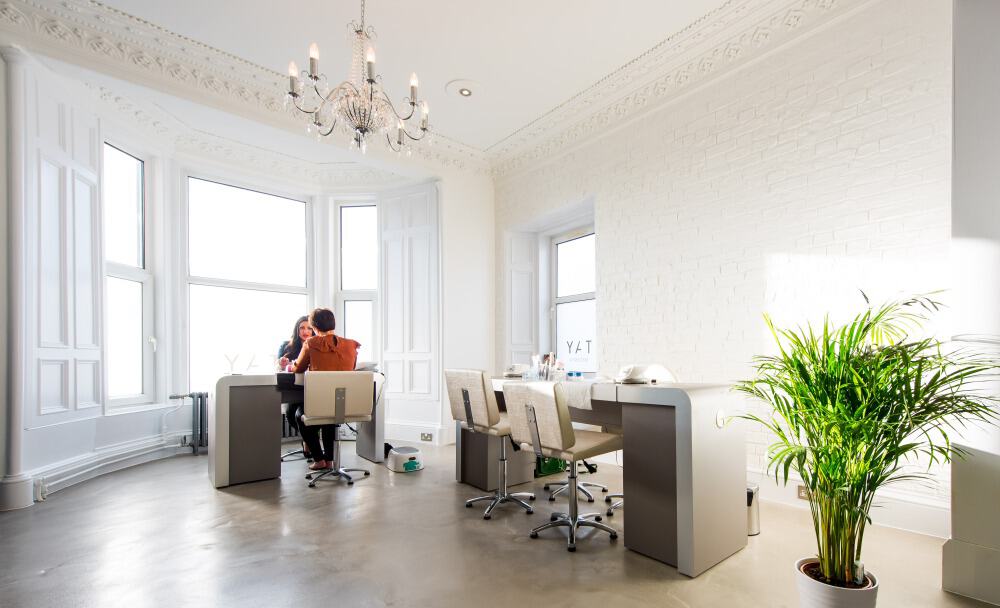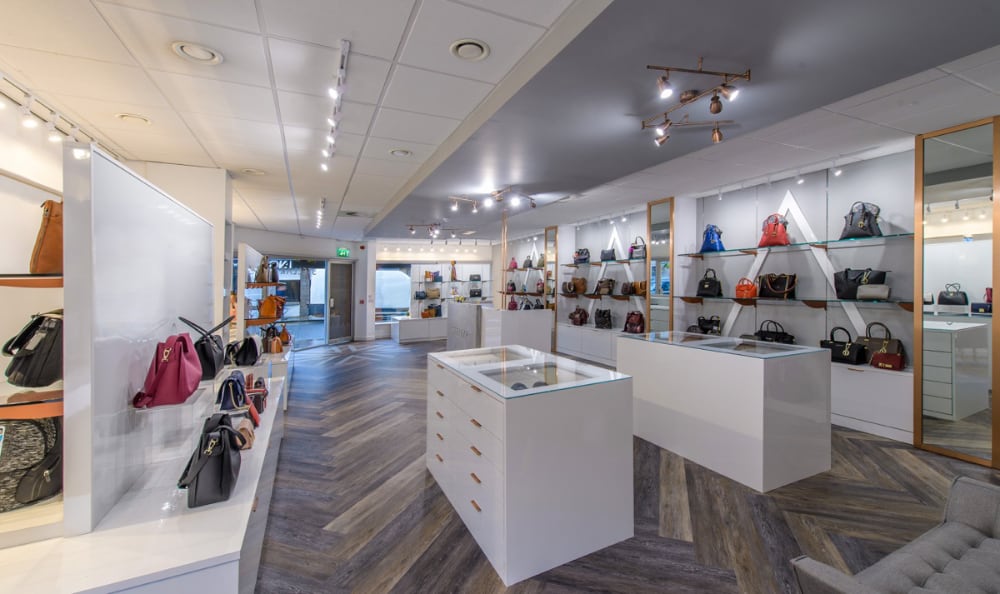Why e-commerce Needs a Physical Presence
When it comes to shopfitting in Scotland, the successful stores are those whose owners and managers understand shopping today is all about creating a destination and experience your customers won’t be able to forget.
Regardless of the sector – with the exception of restaurants, cafes and other ‘social entertainment venues’ – physical outlets have to try so much harder to entice customers through their doors. The reason being, of course, is that so many people are choosing to buy online today – regardless of whether they are doing so for convenience or because they believe that items purchased via the internet are usually less expensive (even though the latter is definitely not always correct, according to Nick Carroll, senior retail analyst at Mintel, the consultancy)..
It’s really not news for most of us though that footfall on our high streets has been declining for years. And no-one can fail to have noticed the numerous new logistics and delivery companies setting up right, left and centre. But, if you are a fan of physical stores and enjoy the day-to-day banter and social interaction with customers then don’t despair; physical retailing isn’t over yet – not by a long shot.
Shopfitting Scotland: How physical stores can win over on-line customers
So what advantages do physical shops have over their e-commerce equivalent? Well, a huge advantage for the high street store is the ability to appeal to their customers’ senses. This could be via smell (flowers in a boutique or baking bread in a supermarket) and could also involve touch; take online-only mattress company Caspar, for instance. Customers loved the concept and look of the mattresses but also wanted to know how they would feel. As a result Caspar now also sells exclusively via Target in the US.

At Stellar in Aberdeen a minimalist look gave the shop interior a very airy, uncluttered and sophisticated look where customers could enjoy browsing freely without feeling hurried or harassed. Handbags are ‘showcased’ individually on glass shelving, giving them an ‘exclusive’ feel
Then there is the in-store atmosphere to savour, along with the physical presence of other shoppers (plenty of people see shopping as a social occasion). All of these can be enhanced in a physical outlet. In a clothing store, for instance, shop staff could point out matching garments and accessories and, at the same time, make the shopping experience as comfortable and easy as possible for the shopper by eliminating queues. Some stores these days provide soft drinks or tea and coffee, while others offer sweets or other small nibbles (French natural beauty chain L’Occitane hands out branded chocolate squares at its shop counters),
Some stores even allow dogs on the premises, others allow customers to choose what music they would like to listen to while browsing through the instore goods.
Shopfitting Scotland: IT and the physical store
So how have the Big Boys coped with this change in consumer spending trends? Well, technology certainly plays a leading role. US sports company Nike, for instance, encourages customers to design their own customised training shoe in their physical stores. They then make the shoes up and can deliver them within the hour. Even ‘next day delivery’ online stores can’t beat that…
Upmarket store John Lewis spends thousands of pounds on technology to monitor online and offline trends so that it knows well in advance exactly what to stock in its stores for each coming season.
A survey by Mood Media showed that customers (more than half of 11,000 American consumers) were keen to have redeemable discounts and vouchers sent to their phone for a particular store while they were instore browsing.

Neutral white walls, plain shelving and a grey polished concrete floor allowed the colours of the garments and shoes in Hanon’s male outfitters to ‘pop’ and attract the customers attention by themselves. It also provided a smart and neat appearance – the sartorial appearance customers are looking for
Are things slowly starting to turn?
But physical stores may not have to try too hard to compete with online competition in the future, at least not according to Mark Charlton, head of forecasting and research at property consultants Colliers.
He believes that the pendulum is starting to swing, in the sense that many stores – including those which began as online only – are now beginning to open physical High Street outlets in a bid to display their products and entice customers to buy (see the Caspar example above). This concept, referred to as ‘showrooming,’ obviously has a brand bolstering aspect too.
Meanwhile, a US study of 1622 consumers, carried out last year, showed that 58 per cent of 18-25 year-olds preferred to shop instore than online. That number reduced to 46 per cent for shoppers aged 26 to 45-years old. Many of the respondents in The Walker Sands Future of Retail 2017 study said they preferred physical shops because of the ‘unique experience’ they provided.

The independent Tay Medispa is certainly all about ‘experiences.’ The newly-opened clinic in Perth, which offers a range of healthcare, aesthetics and beauty treatments, was designed with a luxury and contemporary feel aimed at making clients feel comfortable and pampered.
From online to creating a physical retail presence
Meanwhile, big names who have recently opened more shops in the UK include car manufacturer Seat, Dyson and Samsung. French fashion company Sezane, who originally started selling and marketing on eBay, now has a number of physical stores in a number of the world’s biggest cities. The same goes for UK luxury clothes retailer Matches of Fashion; originally on-line only, the company now has two physical stores in London; the idea being that customers are able to go in and touch garments as well as try them on (a perfect example of ‘showrooming’). They have also ensured that their staff are incredibly friendly too, doling out regular fashion advice for customers.
Charlton at Colliers was also basing his analysis on a recent report which showed that online sales is expected to fall from today’s level of around 11pc of sales, to seven per cent in three years.
Online giant Amazon is no doubt well aware of this and has already made a move into the physical retail world by buying health food grocery store Whole Foods in the US last year. It has also opened a number of ‘shop front’ Amazon stores which allow customers to pick up goods rather than have them delivered. In this way, not only does the customer save on postage costs, but it also allows them to get their goods quicker, even same day.
Shopfitting Scotland: combine physical and online sales with our help
At SteamPunk Fit Out we aim to create a physical interior for your shop, restaurant, café, bar or office, which is beautiful, functional and safe. We achieve this through detailed consultation, planning and building with professional and experienced joiners.
Our design team will then bring in colour, texture and lighting in order to create the perfect atmosphere and look you want for your business. If you’re in the market for a fit out any time soon then why not take a look through our gallery at SteamPunk past projects? We’ve completed much-admired fit outs in Perthshire, Aberdeen, Edinburgh, throughout Scotland and with more notable Shopfitting Glasgow. You can also call us for an informal chat on 0800 197 2922 or feel free to drop us an email via the Contact page on our website. We really do look forward to hearing from you!

